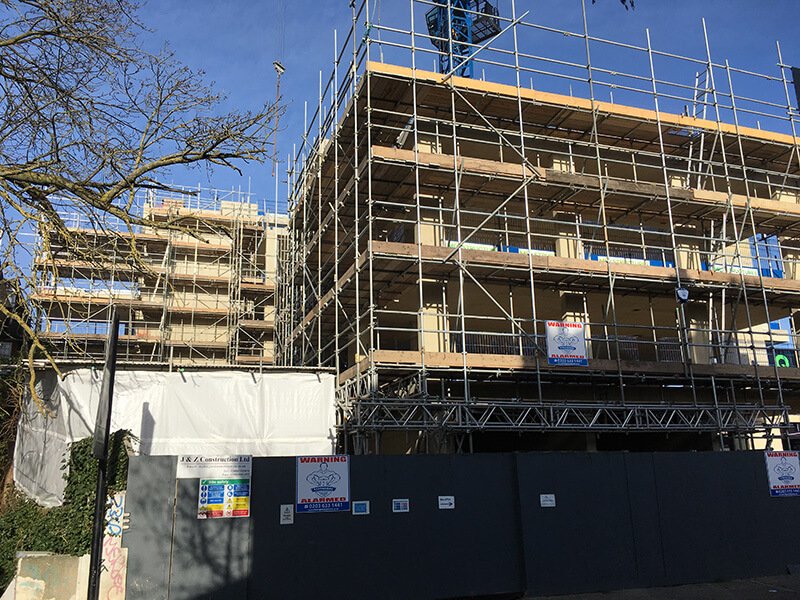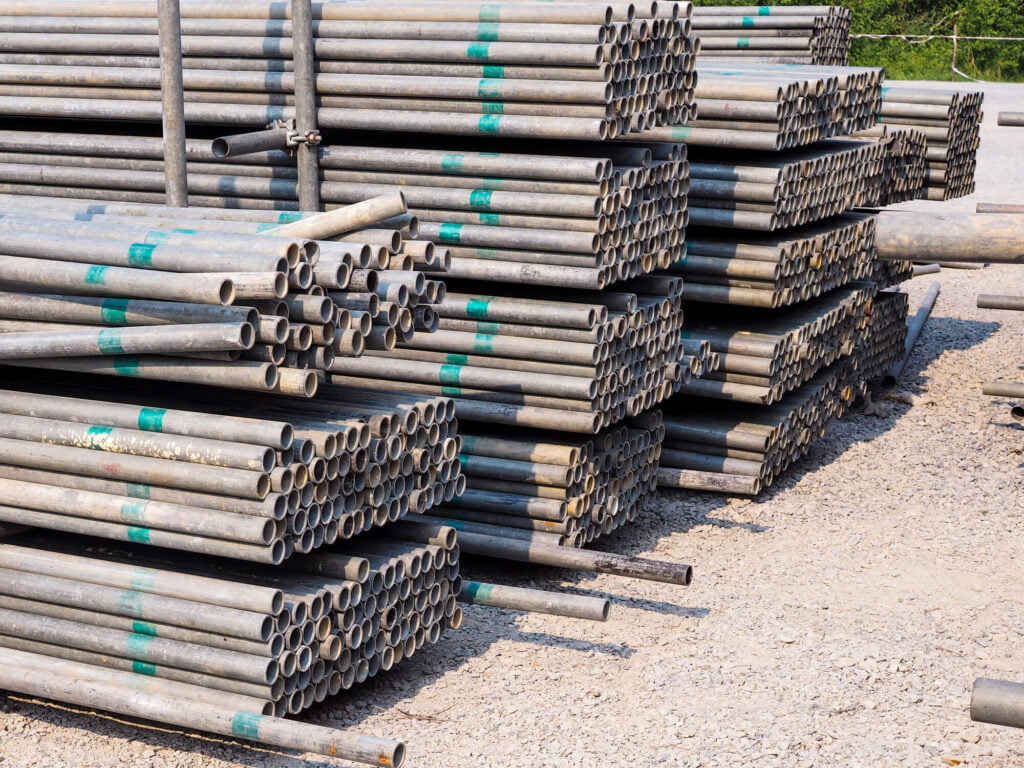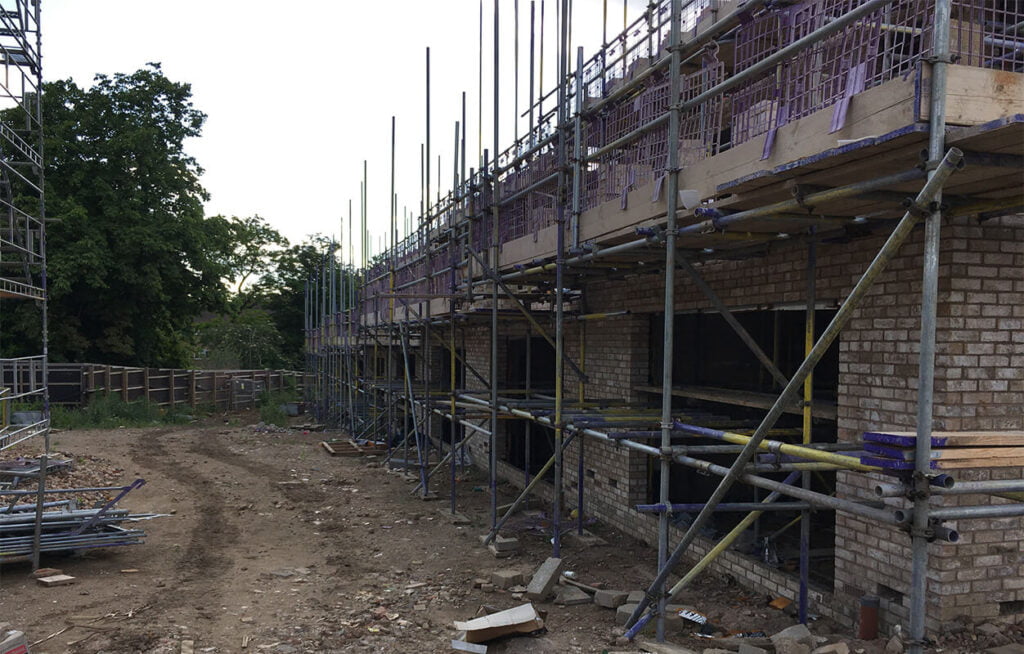The common types of scaffolding materials include steel, aluminium, and wood. Considering the fact that scaffolding is meant to provide support and safe and easy access when working at height, the materials are lightweight while not compromising on their strength.
Bamboo is yet another scaffolding material used abroad. However, its use isn’t common in the UK as it is in China and Hong Kong.

What are the main parts and components
The following material is used for scaffolding: couplers, tubes, and boards. Those are the basic components of scaffolds. These components are lightweight and sturdy enough to provide the support needed for either the materials, workers, or both. The other components that may be used in scaffolding include ladders, ties, and sheeting, among others.
1. Tubes

The tubes used in scaffolds are commonly made from steel or aluminium. If there’s a possible risk from overheated electric cables that can’t be isolated, composite scaffolding can be used. Depending on the type of scaffolding being erected, the tubes come at different lengths. The main difference between steel and aluminium is that aluminium is more lightweight. However, their flexibility and stress resistance can’t be overlooked.
2. Couplers

Scaffold couplers are the fittings that hold the tubes together. The most common types of couplers include the following:
- Putlog couplers
- Right-angle couplers
- Swivel couplers
- Sleeve couplers
Sleeve couplers are used to join tubes end-to-end. To fix the tubes in a load-bearing connection, you can use either swivel couplers or right-angle cuplers.
3. Boards
Boards are used to provide a working platform for scaffold workers. The boards can come at different widths but the maximum height is 3.9m. In the UK, thee timber scaffold boards used are required to comply with the BS 2482 requirements. Some of the things required to ensure that the working platform is safe include double guard rails, toe boards or stop boards.

How many types of scaffolding materials are there
There are three major types of scaffolding materials: steel, aluminium, and wood. Wood is mostly used for creating a working platform on scaffolds. The common types of wood used to provide a durable solution include pine or fir.
Aluminium is best suited for scaffolding because it’s lightweight, stable and doesn’t corrode easily. Apart from being ductile and soft, this metal is low maintenance.
Steel is one of the strong and durable materials used for scaffolding. It’s also preferred because of its elasticity which prevents cracking.
If the materials are made from metal, they can be painted on. However, this can’t be done on wooden materials since they can easily hide any defects.
Considering all scaffolding should be erected by a competent person, the scaffolder should easily be capable of determining the scaffold materials they’ll need depending on the type of scaffolding that’s to be erected.